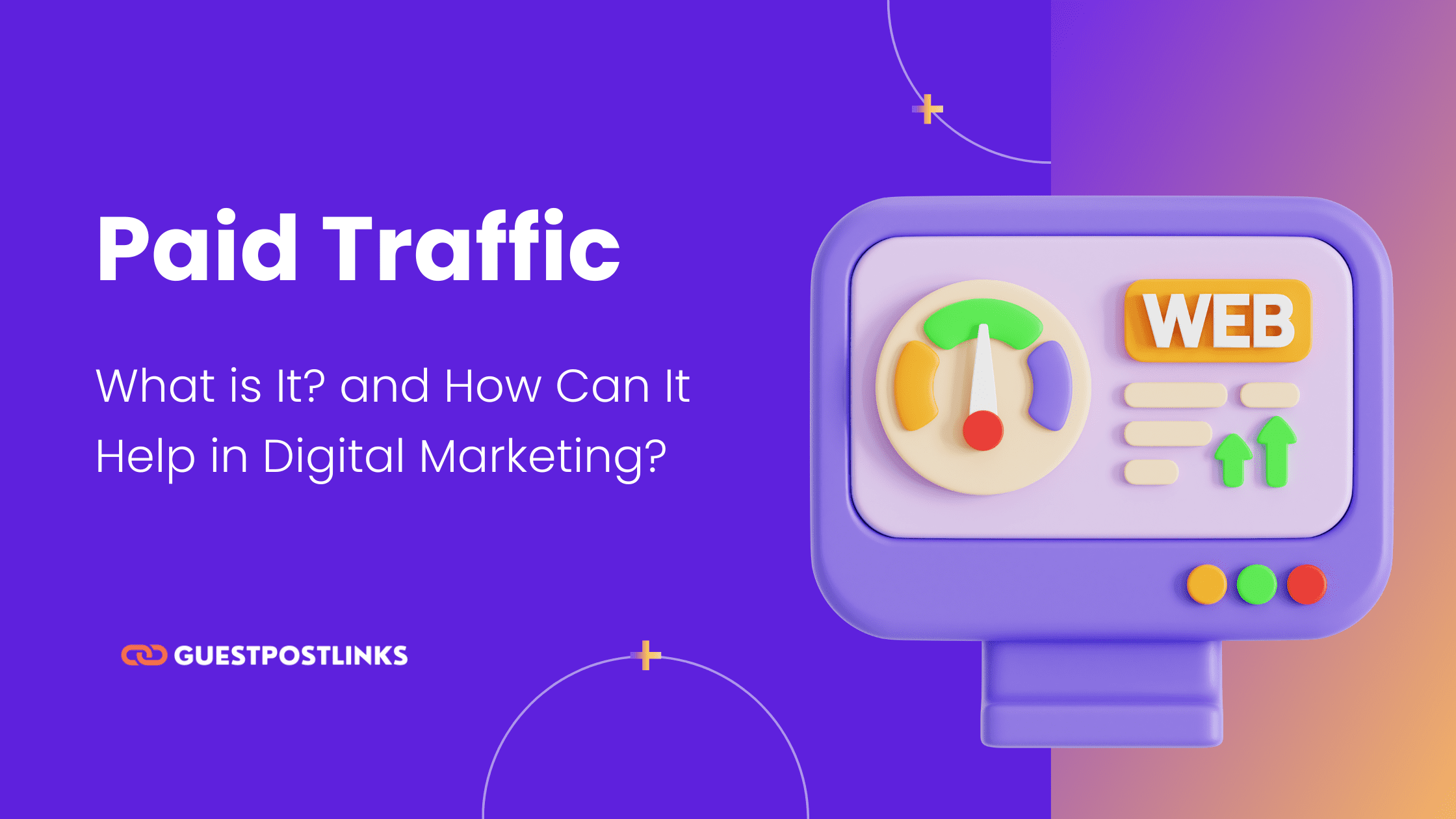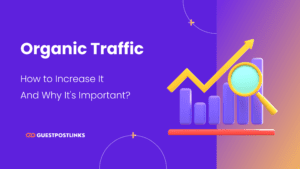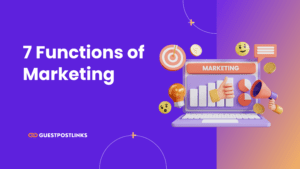What is Paid Traffic, and How Can It Help in Digital Marketing?

Are you looking to drive more visitors to your website and boost your online presence? Paid traffic might be the solution you’re seeking!
In this blog, we will explore the concept of paid traffic and its significance in the realm of digital marketing. Understanding what paid traffic is and how it can benefit your business is essential in today’s competitive online landscape.
What Is Paid Traffic?
Paid traffic refers to the practice of acquiring website visitors through paid advertising. In this strategy, advertisers bid on specific keywords or audience segments to display their ads on various platforms. Unlike organic traffic that comes from unpaid search engine results, paid traffic involves investing money to attract potential customers to your website.
What is Paid Traffic in Digital Marketing?
In the realm of digital marketing, paid traffic plays a pivotal role in driving targeted traffic to websites, thereby increasing the chances of lead generation and conversions. By leveraging paid traffic, businesses can amplify their online reach and visibility, gaining a competitive edge in the market.
How Does Paid Traffic Work?
Paid traffic operates on a pay-per-click (PPC) basis, where advertisers are charged only when a user clicks on their ad. The ad placement is determined through an auction-like process, wherein factors like bid amount, ad quality, and relevance to the audience are considered.
Advertisers can target their ads based on demographics, interests, online behavior, and other parameters, ensuring that their messages reach the right audience.
Why Is Paid Traffic Important?
Paid traffic holds immense importance in digital marketing for several compelling reasons:
Immediate Results
Unlike organic traffic that may take time to build, paid traffic provides immediate visibility. By investing in paid advertising, businesses can instantly drive visitors to their website, generating quick leads and potential sales.
Precise Targeting
It offer advanced targeting options, allowing advertisers to reach specific demographics, interests, and behaviors. This precision targeting ensures that ads are shown to the most relevant audience, increasing the likelihood of conversions.
Enhanced Brand Awareness
Paid advertising helps in boosting brand visibility across various online channels. Even if users don’t click on the ad immediately, the brand exposure contributes to brand recognition and recall, which can influence future purchasing decisions.
Measurable ROI
Paid traffic campaigns provide detailed analytics and performance metrics. Advertisers can track the number of clicks, impressions, conversions, and other key performance indicators (KPIs). This data-driven approach allows for better optimization and an understanding of the campaign’s return on investment.
Flexibility and Control
Advertisers have significant control over their paid traffic campaigns. They can set budgets, adjust bids, schedule ads, and make real-time modifications to optimize performance. This flexibility ensures that campaigns can adapt to changing market conditions and business objectives.
Paid Traffic VS. Organic Traffic
Paid traffic and organic traffic are two distinct avenues for attracting visitors to your website. Organic traffic comes from unpaid search engine results, and its growth depends on factors like SEO optimization and content marketing strategies.
On the other hand, paid traffic provides an immediate boost in visibility, allowing businesses to reach their target audience more effectively.
Also Read: Direct Traffic vs. Organic Traffic: Understanding the Difference
Types of Paid Traffic Campaigns
Paid traffic encompasses various advertising campaigns aimed at driving visitors to your website. Some of the most common types of paid traffic campaigns include:
Pay-Per-Click (PPC)
PPC advertising allows advertisers to bid on keywords and pay only when their ads are clicked. This method offers a cost-effective approach since you’re charged only for actual clicks, making it easier to measure the return on investment (ROI).
Google Ads
Google Ads, formerly known as Google AdWords, is a prominent PPC platform that enables businesses to display their ads on Google’s search engine results pages and partner websites.
Social Media Platforms
Social media platforms like Facebook, Instagram, Twitter, and LinkedIn offer paid advertising options to target specific user demographics and interests.
Display Advertising
Display ads are visual advertisements that appear on websites, apps, or social media platforms to generate brand awareness and attract potential customers.
Native Advertising
Native ads blend seamlessly with the platform’s content, providing a less intrusive advertising experience for users.
Sponsored Ads/Posts
Sponsored ads or posts are promotional content integrated into third-party websites or social media accounts to reach a broader audience.
Affiliate Marketing
Affiliate marketing allows businesses to partner with affiliates who promote their products or services in exchange for a commission on successful conversions.
Website Banners
Website banners are graphical ads displayed on websites to attract visitors’ attention and redirect them to the advertiser’s site.
Also Read: 301 Redirect: What it is, When to use, Importance, How to use it?
Benefits of Paid Traffic
Speed
Paid traffic can deliver immediate results, providing a rapid influx of visitors to your website. This can be particularly advantageous for new businesses looking to establish an online presence quickly.
Analytics
Paid advertising platforms offer detailed analytics and insights, allowing advertisers to track the performance of their campaigns and make data-driven decisions for optimization.
A/B Testing
Paid traffic campaigns can be easily tested and tweaked to identify the most effective ad copies, visuals, and targeting options for improved results.
Audience Targeting
Advertisers can precisely target their audience based on demographics, interests, behavior, and other factors, ensuring that their ads reach the right people.
Increased Conversions
With the ability to target the right audience and refine ad strategies, paid traffic can lead to higher conversion rates, translating into increased sales and revenue.
Also Read: Ultimate SEO Glossary: 499+ Essential SEO Terms You Need to Know!
Drawbacks of Paid Traffic
Cost: Paid traffic can be costly, especially for competitive keywords or industries. Advertisers need to manage their budgets effectively to ensure a positive return on investment.
- Ad Blindness: Some users have developed “ad blindness” due to the abundance of online advertisements. They may consciously or unconsciously ignore paid ads, reducing their effectiveness.
- Ad Blockers: Ad blockers prevent certain users from seeing paid ads altogether, limiting the reach of the campaign.
- Learning Curve: Effectively managing paid traffic campaigns requires a certain level of expertise. Advertisers need to understand the platform’s features, optimization techniques, and ad formats to achieve success.
- Dependence on Budget: Paid traffic’s benefits are directly related to the budget allocated to the campaigns. Once the budget is exhausted, the traffic flow may cease unless further investments are made.
Paid Traffic Won’t Work Without A Great Website
While paid traffic can drive visitors to your site, it won’t be effective in achieving desired outcomes if your website lacks compelling content, user-friendly navigation, and clear calls-to-action.
Conclusion
In conclusion, paid traffic is a powerful tool in the digital marketing arsenal, offering businesses an opportunity to expand their online reach and attract potential customers. By utilizing various types of paid traffic campaigns, advertisers can drive targeted traffic, increase conversions, and achieve their marketing objectives. However, it’s crucial to balance paid traffic with organic efforts and ensure a strong website foundation for optimal results.
FAQs
How would you determine the mobile ecommerce conversion rate for paid traffic?
The mobile ecommerce conversion rate for paid traffic can be determined by dividing the number of completed conversions on mobile devices by the total number of visitors from paid mobile traffic, and then multiplying by 100 to get the percentage.
How to get paid for website traffic?
To get paid for website traffic, you can consider various methods such as joining affiliate programs, displaying ads through ad networks, selling sponsored content, or offering premium subscriptions or products on your website.
What is paid traffic and unpaid traffic?
Paid traffic refers to website visitors acquired through paid advertising, while unpaid traffic (organic traffic) comes from unpaid search engine results and other non-paid sources.
What is paid traffic in SEO?
In SEO, paid traffic refers to the traffic generated through paid advertising campaigns rather than through organic search engine optimization efforts. It involves paying for clicks or impressions to attract visitors to a website.




